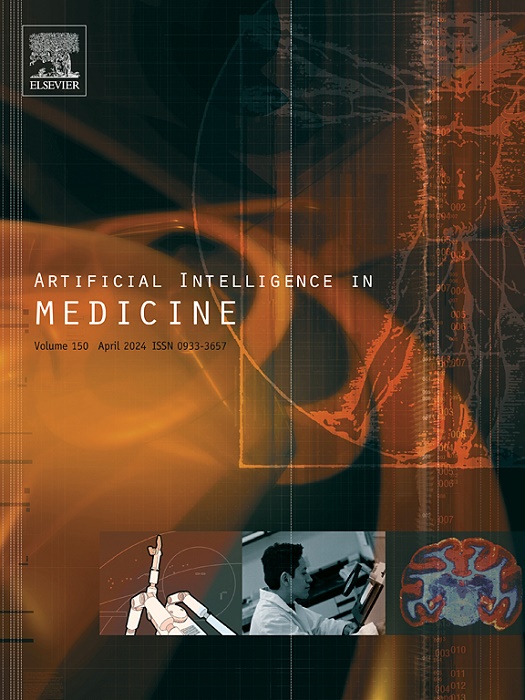SCLResNet和DSAF:基于自我监督对比学习和深度自我注意融合的多模式网络预测甲状腺乳头状癌中央淋巴结转移。
IF 6.2
2区 医学
Q1 COMPUTER SCIENCE, ARTIFICIAL INTELLIGENCE
引用次数: 0
摘要
准确预测甲状腺乳头状癌(PTC)的中央淋巴结转移(CLNM)对于避免不必要的侵入性手术至关重要,但现有的模型往往存在不足。我们构建了基于对比学习框架的SCLResNet101模型来提取肿瘤超声(US)的网络特征。使用SeResnet101从C6(甲状腺下方的动脉和静脉层)的计算机断层扫描(CT)中提取血管周围脂肪组织(PVAT)的网络特征。采用二元逻辑回归进行单因素和多因素分析以选择临床特征。最后,我们构建了一个深度自注意融合(DSAF)网络来整合这三种模式的特征,用于CLNM预测。单因素和多因素分析显示,性别、年龄、US大小和甲状腺外扩(ETE)是CLNM的独立危险因素。在内测队列(I-T)中,模型的曲线下面积(AUC)为0.863 (95% CI: 0.779 ~ 0.932)。在外部测试队列(E-T)中,AUC为0.839 (95% CI: 0.755-0.905)。与所有放射科医生相比,该模型显著降低了I-T和E-T的假阳性和假阴性率。本研究纳入了PVAT,这显著提高了多模态深度学习模型的性能,并可能帮助外科医生在治疗PTC时做出更明智、更精确的手术决策。本文章由计算机程序翻译,如有差异,请以英文原文为准。
SCLResNet and DSAF: A self-supervised contrastive learning and deep self-attention fusion-based multimodal network for predicting central lymph node metastasis in papillary thyroid carcinoma
Accurate prediction of central lymph node metastasis (CLNM) in papillary thyroid carcinoma (PTC) is crucial to avoid unnecessary invasive procedures, yet existing models often fall short. We constructed the SCLResNet101 model based on a contrastive learning framework to extract network features of tumor ultrasound (US). SeResnet101 was used to extract network features of peri-vascular adipose tissue (PVAT) from the computed tomography (CT) of C6 (the arterial and venous layers beneath the thyroid). Univariate and multivariate analyses were performed using binary logistic regression to select clinical features. Finally, we constructed a Deep Self-Attention Fusion (DSAF) network to integrate features from these three modalities for CLNM prediction. Univariate and multivariate analyses revealed that Gender, Age, Size of US, and Extrathyroidal Extension (ETE) were independent risk factors for CLNM. In the internal test cohort (I-T), the area under the curve (AUC) of model was 0.863 (95 % CI: 0.779–0.932). In the external test cohort (E-T), the AUC was 0.839 (95 % CI: 0.755–0.905). Compared to all radiologists, the model significantly reduced both false-positive and false-negative rates in both the I-T and E-T. This study incorporates PVAT, which significantly enhances the performance of the multimodal deep learning model and may assist surgeons in making more informed and precise surgical decisions in the treatment of PTC.
求助全文
通过发布文献求助,成功后即可免费获取论文全文。
去求助
来源期刊

Artificial Intelligence in Medicine
工程技术-工程:生物医学
CiteScore
15.00
自引率
2.70%
发文量
143
审稿时长
6.3 months
期刊介绍:
Artificial Intelligence in Medicine publishes original articles from a wide variety of interdisciplinary perspectives concerning the theory and practice of artificial intelligence (AI) in medicine, medically-oriented human biology, and health care.
Artificial intelligence in medicine may be characterized as the scientific discipline pertaining to research studies, projects, and applications that aim at supporting decision-based medical tasks through knowledge- and/or data-intensive computer-based solutions that ultimately support and improve the performance of a human care provider.
 求助内容:
求助内容: 应助结果提醒方式:
应助结果提醒方式:


